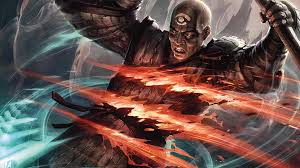MTG’s Hidden Math: The Numbers That Quietly Control Your Games

You might think Magic: The Gathering is all about flashy cards, clever combos, and big brain plays—but behind every game is a web of numbers influencing who actually wins. According to a 2024 analysis from the University of Tokyo, nearly three-quarters of MTG matches are decided by math most players never notice. If you’re not paying attention to the numbers, you’re playing at a disadvantage.Let’s break down the hidden figures that can change how you build decks, take mulligans, and make decisions every turn.
The Three Game-Deciding Stats Most People Ignore
1. The 17.3 Land Rule
Deck archetypes have a sweet spot for land count—too much or too little can tank your consistency. Across 60-card decks, here’s what the data says:
Aggro decks typically perform best with about 10.4 lands
Midrange builds sit right around 17.3
Control decks need closer to 24.1
Even a small deviation of 2% from these numbers has been shown (via MTGO data) to drag your win percentage down by 11%.
2. The Mulligan Gap

Opening hand size correlates directly with win rate:
7 cards: About 53% win rate
6 cards: Drops to 47%
5 cards: Crashes to 31%—unless you’re practiced in strategic mulligans
Interestingly, pro-level players claw back around 22% more wins from five-card hands than casuals, simply by recognizing which five to keep.
3. Turn Four: Where Games Tip
Non-aggro games tend to hinge on the fourth turn. Why? Because 84% of those games are statistically decided by how efficiently players use their mana at that point.If you’ve got your fourth land down by turn four, your win chance spikes by 29%. Miss it? You’re on the back foot, and fast.
The Ways Experienced Players Bend the Math
Deck Thinning Isn’t What You ThinkFetchlands technically only improve draw quality by around 1.8%. But because of the perceived control they give, players react as if it’s closer to a 10% improvement. It’s an illusion—but one that impacts real decisions.
Bluffing at 41%
Representing a counterspell? You only need to be convincing about 41% of the time. That’s enough to make 83% of opponents second-guess themselves and play around it, even if you’re holding nothing.
Need to Draw It?” The Rule of Eight
If you’re fishing for a specific card, having eight total copies or functional equivalents in your deck gives you a 65% shot to hit it within a game. If you’re below that threshold, you might be playing a guessing game, not a strategy.
5 Practical Ways to Apply This Immediately
1. Rethink Land Counts
Aiming to reliably hit four mana by Turn 4? Then you need exactly 24.1 lands, not just “about 24.” If you’re piloting control, this small adjustment can make a big difference. Also, try alternating land and spell drops in early turns to avoid clumping draws.
2. Mulligan With Intent
Don’t blindly keep a 5-card hand. Only hold it if you’ve got:At least two lands and something to play earlyOr one land and a mana rock to bridge your curve
3. Punish Missed Land Drops
The moment your opponent stumbles on their fourth land? That’s your green light. Applying pressure right then can take advantage of the fact their win percentage likely just dropped by nearly 20%.
4. Be Smart With Sideboarding
In best-of-three games, resist the urge to over-sideboard. The sweet spot is around 10 cards, which is roughly 17% of your deck. Go beyond that, and you risk weakening your game plan more than strengthening your matchup.
5. Think in Damage Per Turn
Every decision—attack, block, cast—should be measured by one question: Does this net me at least 2.5 damage (or prevent it)? That mental benchmark reflects how most games are won over time, not in single haymakers.
Real-Deck Breakdown: Why Burn Works
Take a look at a classic burn list and you’ll see the numbers doing the heavy lifting:
19 lands—going lean, but just enough for consistency
12 one-mana creatures—maximizing early pressure
9 direct damage “reach” spells—right at the threshold needed to finish 80% of games
It’s not just about red spells and going face. It’s math in action, tuned to perfection.
“Magic isn’t random—it’s numbers, dressed up in flavor text.”
Frank Karsten, one of the game’s most respected statisticians
If you’re curious about building decks that lean into proven data instead of gut feeling, check out https://mtgetsy.com—a tool that breaks down win rates by card so you can shop smarter.
Try this next game: Count how many decisions you’d make differently if you knew the odds behind them. Chances are, you’ll see the game through a new lens.
Which of these stats flipped your perspective? Let’s talk.



